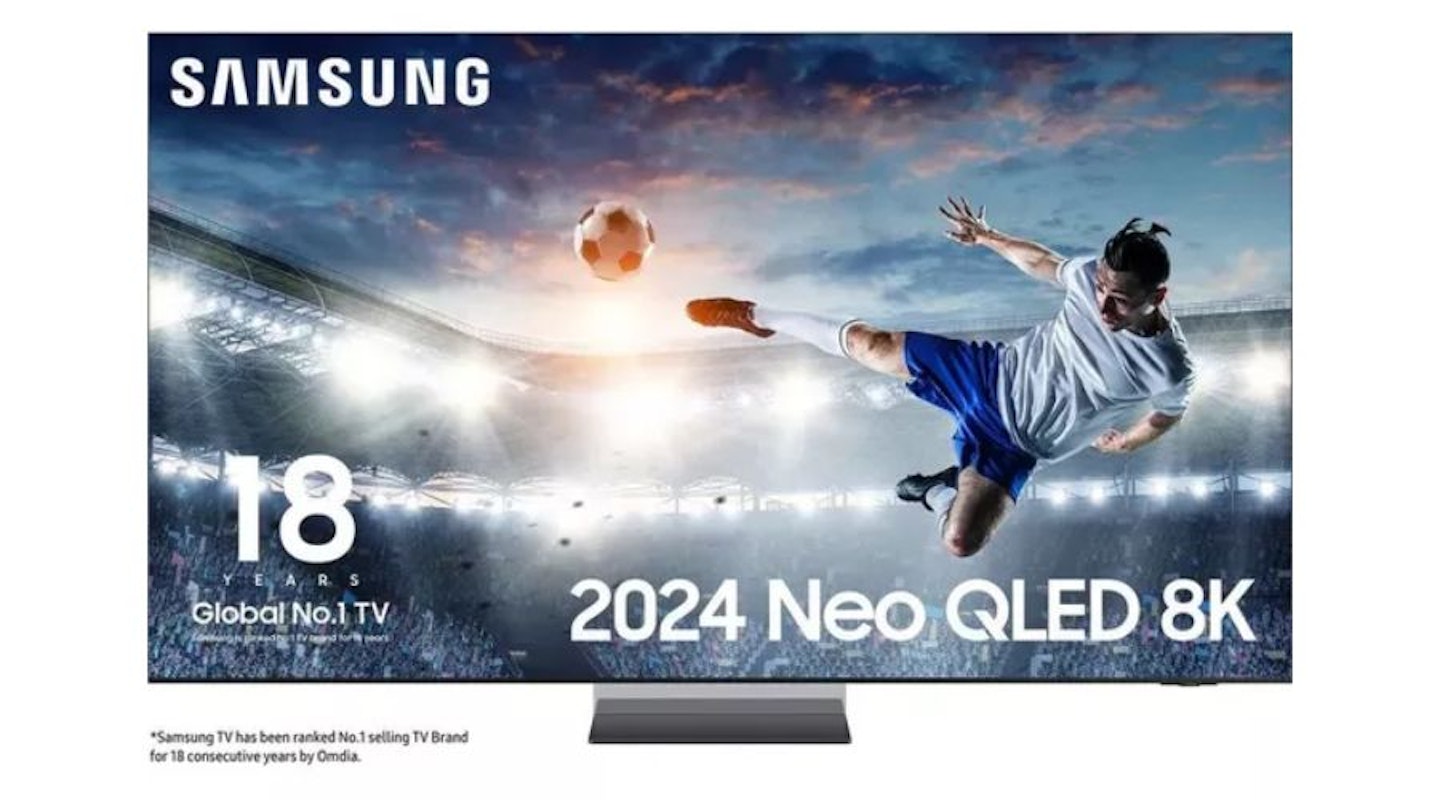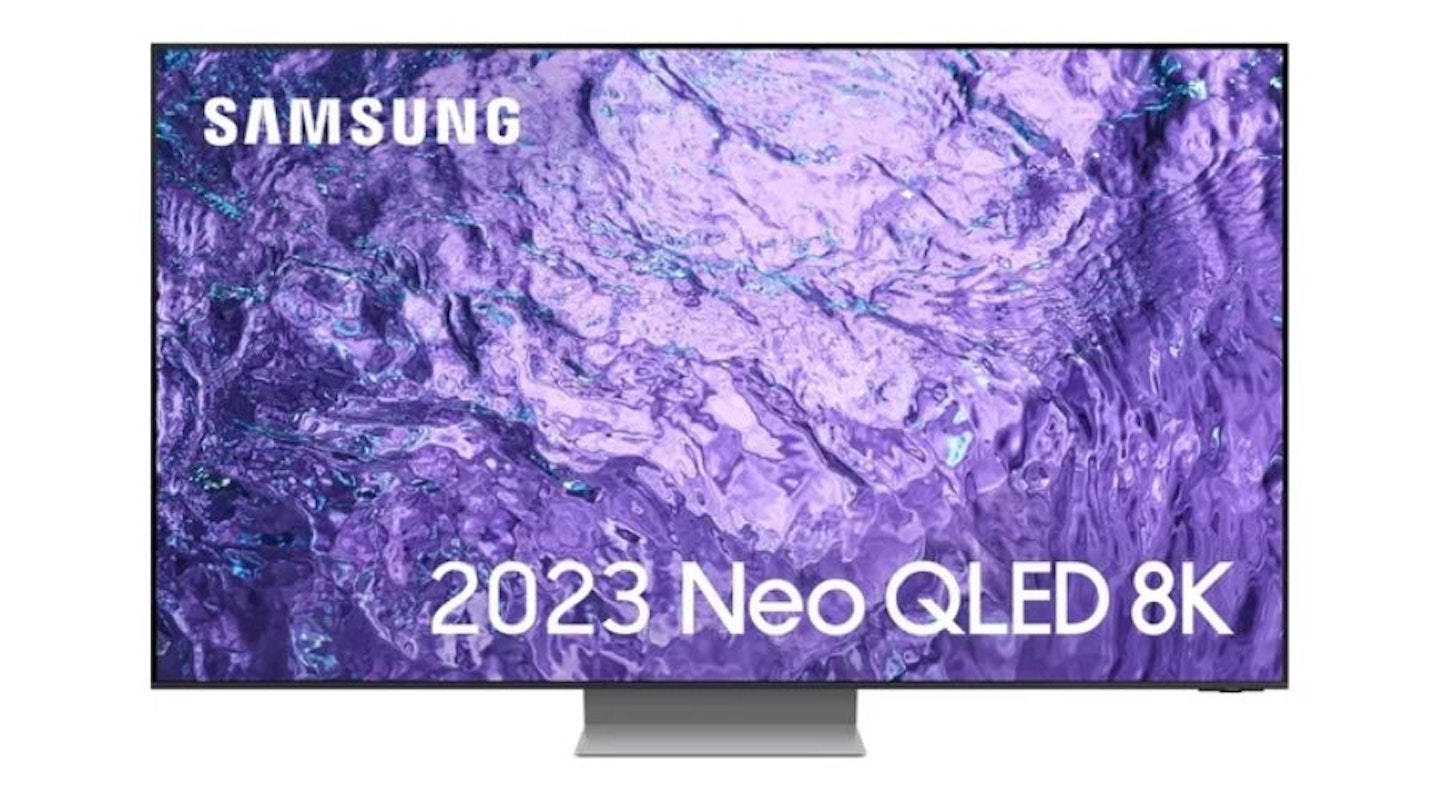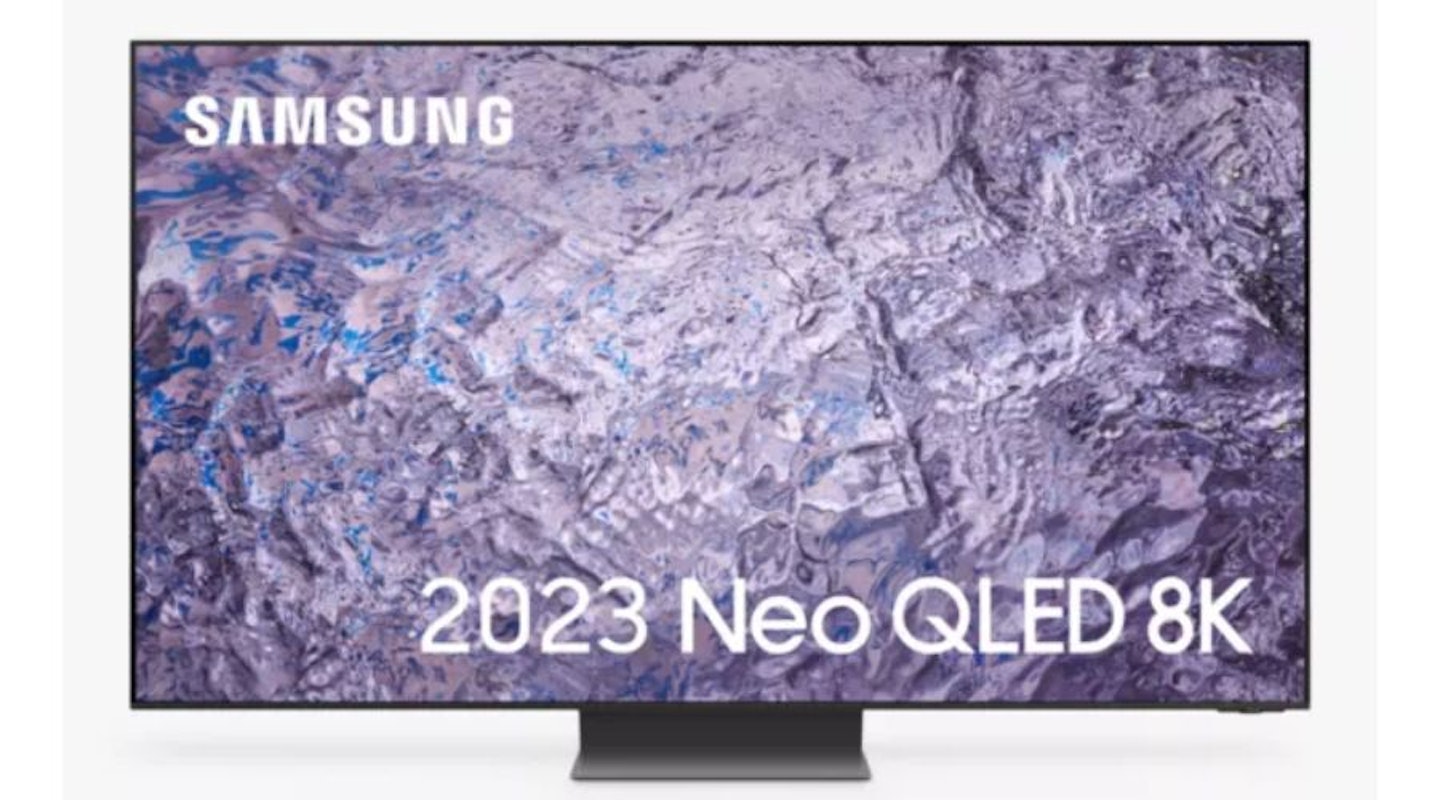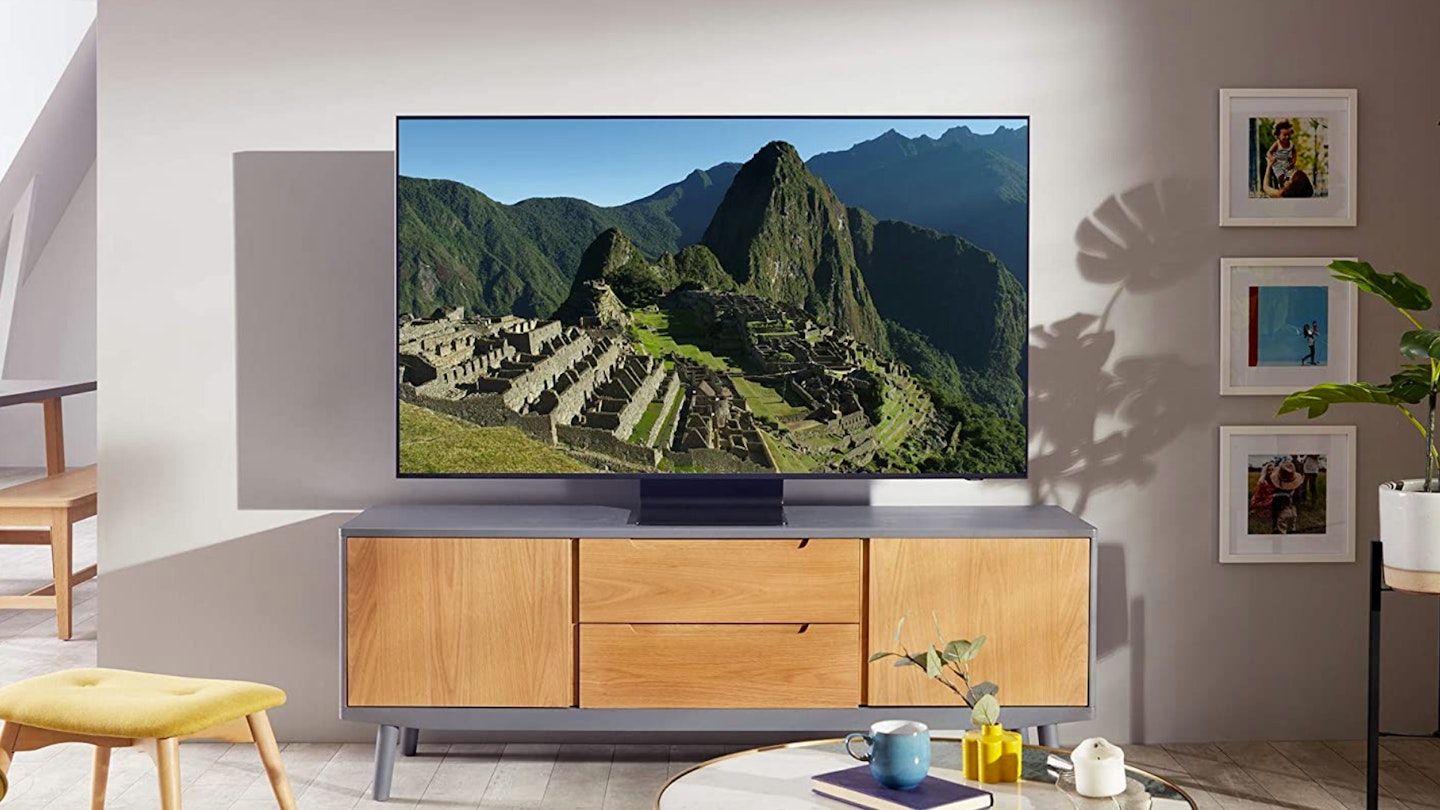It doesn't seem like too long ago that the world of great televisions was buzzing at the promise of 4K Ultra HD; well, now 8K TVs are here. Offering roughly four times the pixels of standard high definition, the best TVs of the day promised viewers greater image clarity, colour depth and improved immersion. We were going to see things that we hadn’t seen before. As it turned out, this was all true. Rather expectedly, the jump between resolutions was incredible. Hold on to your hats, people.
Rather intimidating in terms of sheer numbers, 8K Ultra HD boasts a whopping 7,680 horizontal pixels and 4,320 vertical. That's 33,177,600 pixels dedicated to providing you with nothing but the clearest, deepest and, frankly, most mind-blowing visual experience available today. Likewise, 8K TVs are loaded with tech to upscale any pre-existing content, providing even the oldest of content with fresh appeal and reinvigorated life.
The best 8K TVs of 2025 at a glance:
• Best overall: Samsung QE65QN900D Neo QLED – View on Currys
• Best value: Samsung QE55QN700CT Neo QLED – View on Currys
• Best large screen: Samsung QE85QN800C Neo QLED – View on John Lewis
There's more to be excited about with 8K TVs than just the impressive visual experience. To match the flawless imagery, manufacturers have taken particular care to craft an equally impressive audio spectacle, with speakers mounted behind the screen to deliver audio directly to the audience. Though some will still want to opt for one of the best surround sound systems, there's no denying that 8K TVs are redefining what in-built audio can do.
While there's not an abundance of 8K content around, it's on the horizon – the PlayStation 5 and Xbox Series X are ready to go with content for 8K TVs. Pretty much the only other way you're going to up your gaming experience is with one of the best VR headsets.
All prices are correct at the time of writing. Prices, stock and deals are subject to change without notice.
The best 8K TVs of 2025
Best overall
 Samsung
SamsungWhen upgrading to an 8K TV, it makes sense to choose the best model, and we think that's the QE65QN900D. Its 8K resolution pairs with a fantastic refresh rate that can reach 120Hz. As such, motion appears super smooth and fluid, and on a QLED screen, it's bright and vibrant as well.
It's not just the screen that is notable – the sound here is excellent. A 90W output is great for any TV, but the QE65QN900D goes the extra step. This TV sports 12 speakers, providing you with a rich soundscape with brilliant power and clarity.
Pros
- Stunning QLED screen
- Incredible audio output with 12 speakers
- Refresh rate of up to 240Hz is great
Cons
- Quite heavy so be careful if wall mounting
| Screen size | 65-inch |
| Other sizes | 75, 85 inches |
| Screen type | QLED |
| Refresh rate | Up to 240Hz |
| HDMI | HDMI 2.1 x 4 |
| HDR | HDR10+ |
| Audio | 90W |
| Smart assistant | Amazon Alexa, Bixby |
| Dimensions | 1433.5 x 892.4 x 265.7 mm |
| Weight | 30.2kg |
Best value
 Samsung
SamsungAlthough no 8K TV is "budget-friendly", the QE55QN700CT shows you can still find an affordable option. Considering there are still many 4K displays sitting at a higher price, this TV is great value for money. In terms of specs, almost everything is solid, with only the 60Hz refresh rate lagging behind.
One of our favourite features is the Object Tracking Sound Lite. This has the speakers follow what the screen is showing, adding a bit of dynamic flair to your soundscape. Combine that with the 60W output and you get a great audio experience.
Pros
- Excellent affordability for an 8K display
- Object Tracking Sound Lite blends sound and visuals very well
- Easy to use with smart assistants
Cons
- Refresh rate is only 60Hz
| Screen size | 55-inch |
| Other sizes | Unspecified |
| Screen type | QLED |
| Refresh rate | 60Hz |
| HDMI | HDMI 2.1 x 4 |
| HDR | HDR10+ |
| Audio | 60W |
| Smart assistant | Amazon Alexa, Bixby |
| Dimensions | 777.4 x 1224.8 x 267.9 mm (H x W x D) |
| Weight | 26.5kg |
Best large screen
 Samsung
SamsungIf you're choosing an 8K screen, you might as well go as big as possible, and the QE85QN800C is an 85-inch TV that stands out. The giant screen highlights the best that this pixel density offers and the thin bezels mean no part of your screen is interrupted. Factor in the 100Hz refresh rate and HDR10+ and you won't be disappointed with the screen quality.
As you would expect from the build, it's going to take up a lot of room. Make sure you have enough space to accommodate a screen this size. It's worthwhile though, and the ports are surprisingly easy to access.
Pros
- Very large and stylish display
- Thin bezels don't disrupt the screen
- Solid set of ports
Cons
- Takes up a lot of space
| Screen size | 85-inch |
| Other sizes | Unspecified |
| Screen type | QLED |
| Refresh rate | 100Hz |
| HDMI | HDMI 2.1 x4 |
| HDR | HDR10+ |
| Audio | 70W |
| Smart assistant | Amazon Alexa, Bixby |
| Dimensions | 1153 x 1893 x 303 mm (H x W x D) |
| Weight | 57.70kg |
Best Sony TV
For something different from Samsung, Sony has the Bravia XR XR75Z9K. Unlike the other TVs on our list, this is a Mini LED display. As such, the XR75Z9K had uniquely bright and vibrant visuals. The specs are fairly solid as well, with a reliable 100Hz refresh rate and 85W audio output.
One major feature is the ‘Cognitive Processor HR’. This unique AI-powered tech analyses every scene, optimising picture and sound. It also adds subtle 3D depth mapping to create a subtle naturalistic feel. Alongside this, you also have Motion Clarity XR which works to reduce motion blur with fast-action like sports.
Pros
- Excellent suite of features
- Stands out as a Mini LED display
- Bright and vibrant visuals
Cons
- No HDR10+, but mitigated by Dolby Vision
| Screen size | 75-inch |
| Other sizes | Unspecified |
| Screen type | Mini LED |
| Refresh rate | 100Hz |
| HDMI | HDMI x 4 |
| HDR | HDR10 |
| Audio | 85W |
| Smart assistant | Amazon Alexa, Google Assistant |
| Dimensions | 998 x 1671 x 396 mm (H x W x D) |
| Weight | 26.5kg |
How to choose the best 8K TV for you
What size TV do I need?
Unsurprisingly, this decision is best made after deliberating over your available space, budget and requirements. However, it tends to be sensible to have the smaller TVs in smaller rooms, and larger ones - like 8K TVs - in the biggest rooms. At the moment, 8K resolutions only tend to be found in much larger screen sizes, so your 8K TV is likely to demand a lot of space.
And so, if you're too close to a TV (and definitely in the case of large 8K TVs) no matter how high-quality the image, it's going to look blown out and poor. Too far, and you may as well watch Netflix on your phone.
Here’s a rough guide to give you an idea of the minimum distance you should have from your TV when viewing HD content:
40-inch TVs – 80 inches (6.7 feet)
50-inch TVs – 100 inches (8.3 feet)
55-inch TVs – 108 inches (9 feet)
60-inch TVs – 120 inches (10 feet)
65-inch TVs – 130 inches (10.8 feet)
75-inch TVs – 150 inches (12.5 feet)
Screen resolution guide:
HD: 1,280×720
Full HD: 1,920×1,080
Ultra HD/4K: 3,840×2,160
8K: 7,680×4,320
FAQs
What are HDR and HDR10+?
HDR stands for High Dynamic Range. It works to get as much light, crispness and depth into your picture. Therefore, whites are brighter and blacks are darker. It offers a huge range of over one billion colours. HDR10+ is an extension of this, but the use of metadata creates an even more refined picture. On an 8K TV you'll really see the benefit of this technology.
What's OLED?
LED screens use a backlight to provide the image. With OLED, the pixels produce their own light. Therefore this gives greater accuracy to the image. As you might expect, this technology is ideal for 8K TVs.
What’s QLED?
Samsung does not make OLED TVs, they make QLED. QLED is a Samsung property that replaces Liquid Crystals (found in LCD) and replaces them with Quantum dots, which Samsung believes produce much more vibrant and bright colours and sharper images. QLED technology does tend to make an 8K TV cheaper than its OLED competitor. Our top-rated QLED TV is also our recommendation for the best 8K TV overall – the Samsung QE65QN900D.
Why should you trust us?
At What’s The Best, our mission is to provide accurate and reliable reviews, ensuring our readers receive honest and transparent information about the best technology products available. Anything less would undermine our commitment to being a trusted source of unbiased product information.
Our dedicated in-house writing team comprises experts with extensive experience and a genuine passion for technology. Collectively, we have spent decades testing and writing about tech, leveraging our expertise in all our articles, advice pieces and reviews.
We maintain complete editorial independence and do not accept payment for product reviews. Our writers have full control over their content, ensuring that products are selected based solely on the needs of our readers. While we may earn commissions or other compensation from links on our website, this never affects our product choices. These links enable us to continue offering valuable consumer advice, without compromising the integrity of our reviews.
William Austin-Lobley is the Editor for What's The Best. Here, he oversees, curates and researches listicles and reviews as many products as his home office can handle.
He has spent nearly five years writing about tech, audio, outdoors, and fitness and has reviewed everything from smartphones to ice baths. In addition, he's well-versed in sniffing out the best deals and savings the internet offers.
When not at his desk writing, reviewing or deal-hunting, he'll be relaxing with Japanese crime novels, bingeing some classic anime, strolling the countryside or at the gym listening to the heaviest metal Spotify has to offer.
Subscribe to the What's The Best Newsletter to keep up to date with more of the latest reviews and recommendations from the What's The Best team.

